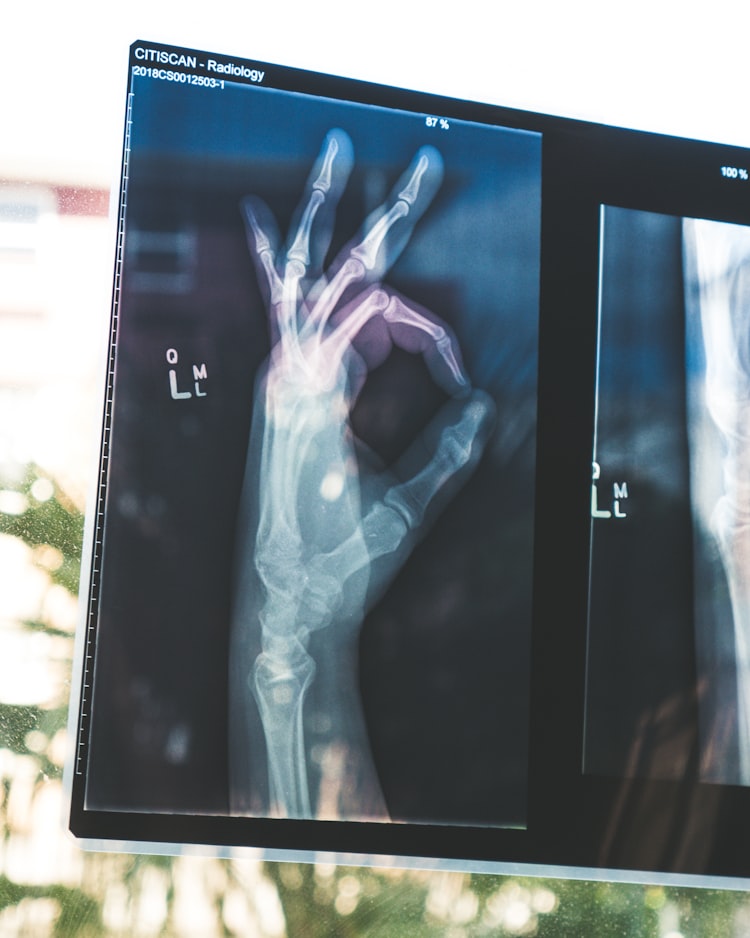Stages of Disease - According to Ayurveda

"According to Ayurveda, one of the main causes of disease is intellectual blasphemy (prajnaparadha), which means not listening to the body's intelligence." - Dr. Vasant Lad
Disease, in most cases, is born from the individual's inability to listen to their internal intelligence. This not listening, or prajnaparadha in sanskrit, is the root cause of all disease - when one continues to insult the body's intelligence and act out in an unproductive manner. Examples of this can be staying up late even though there is exhaustion, eating heavy foods or overeating, ignoring self-care rituals and habits, and the list can continue. Ayurveda recognizes prajnaparadha as the root cause and 31 other causes for disease.
Let's first define disease. Disease is an aggravated dosha that leaves its site, enters into general circulation and lodges into a dhatu (tissue) disturbing the nature, function and structure of that tissue. With 32 total categories of disease/ causes of disease, the list ranges from asatmya indriya artha samyoga (the 3 categories of misuse of the senses) to internal and/or external factors and sama dosha (dosha with toxins) and more. To study disease there is the nidana pancakam. This clinical study of disease contains the following:
* nidana/hetu or the cause, the cause is bound to create an effect
* purva-rupa or prodromal signs, think of the smoke before you see the fire
* rupa or cardinal signs, the full on fire, the clear diagnosable symptoms
* samprapti or the pathogenesis, the "birth of pain"
* upasaya or therapeutic trial, treatments or skillful therapy
In order to study the disease, it is important to know the disease process, or samprapti. Samprapti defines the stages of disease. There are six stages that follow this order:
- Accumulation (sancaya): During this stage the dosa accumulates in its site. Vata in the colon. Pitta in the small intestine. Kapha in the stomach. Vata might be experienced as constipation. Pitta as sugar cravings. Kapha as a feeling of heaviness.
It is important to note that at this stage an individual is still quite healthy, cravings are the body's intelligence knowing to pacify by the opposite quality, and that we are all constantly moving in and out of this stage. - Provocation/ Aggravation (prakopa): In this stage, there is a continued build-up in the site of the dosa. There is a rise of the dosha in its "container". Vata may experience back pain. Pitta heartburn. Kapha a cough or congestion.
Again, in these first two stages, it is very easy to treat the dis-ease by applying the opposite quality. Vata will benefit from oil, routine, relaxation. Pitta will benefit from the cool quality. Kapha will benefit from movement and warming spices.
Vata becomes provoked by:
Qualities: dry, light, cold, frozen, astringent, bitter and pungent
Lifestyle: excessive physical activity, too much talking and traveling
Time: autumn, early morning and in old age.
Pitta becomes provoked by:
Qualities: hot, sharp, light, sour, salty, oily
Lifestyle: laying in the sun, exposure to heat, fasting, eating after 10pm
Time: Summer, midday, midnight, adult age
Kapha becomes provoked by:
Qualities: heavy, cold, oily, dense
Lifestyle: no exercise, sedentary lifestyle, daytime sleep, emotional eating
Time: winter and spring, early morning, early evening and childhood - Spreading (prasara): Vata is always involved in this stage as it has the mobile quality. Without vata there is no movement. The accumulation builds to an excess that it then begins to flow out of its site and into the circulatory system. The doshas will move into their secondary sites. Vata the skin, ears, and bones. Pitta the stomach, eyes, skin and heart. Kapha the lungs, sinuses, lymphatic system. Cravings are distorted and become a way for the aggravated dosa to continue its path of destruction. In most cases, herbal treatment is required.
Once the doshas begin to spread due to the increase (vruddhi) they can move upward, downward or in the transverse direction in one of three pathways - the outer pathway (seen in rasa, rakta and mamsa), the inner pathway (GI tract, from mouth to anus), and the middle pathway (marma points, vital organs).
From Dr. Vasant Lad " So long as the doshas are in the GI tract, they are in the home of agni (fire). In agni's presence, they behave like gentlemen and create opposite cravings in order to pacify any imbalance. Once a dosha leaves the home of agni and enters prasara (the spreading stage), it behaves like a rebellious vagabond and creates like cravings in order to further its journey to the next stage of disease." - Deposition or Localization (sthana samsraya): The aggravated dosha then enters a weak space (khavaigunya). Signs and symptoms of disease will not be recognizable by Western medicine but a skilled Ayurvedic practitioner or doctor will be able to notice these prodromal signs.
In this stage the dosha makes a new home in this weak space, influencing the tissues with its quality. The qualities of vata are: dry, light, rough. Pitta is light, hot, sharp. Kapha is oily, dense, static. The qualities or gunas are a very important topic in Ayurveda. I plan to dedicate an entire post just to the gunas.
There are 7 ways in which weak spaces are created: genetics, injury, repressed emotions, hyper or hypo active dhatu agni, clogged channels, habits, and previous disease. - Manifestation (vyakti): This stage is marked by cellular confusion. The seeds of disease begin to spout. Western medicine can diagnose a disease at this point. Vata will be seen as hyperactive. Pitta as hot or inflammed. Kapha as slow, sluggish or swollen. The unchecked qualities of the doshas are now affecting, suppressing and attacking the tissues.
- Cellular Deformity and Tissue Deconstruction (bhedha): In this final stage of disease, there are now structural and functional changes. Complications arise. The disease continues to spread. It is difficult to treat and often not reversible. Vata can create osteoporosis, muscle wasting, degeneration. Pitta tumors, ulcers, hemorrhaging. Kapha tumor formation, hardening of the tissues, lipoma.
With every stage that progresses, it becomes more difficult to treat the disease. This is why Ayurveda places such a large emphasis on prevention! Daily rituals, right eating and mealtime habits, lifestyle choices, and more all play an important role in keeping the doshas balanced.
Ayurveda is like driving on the freeway. Most of the time, we all drive in the middle lanes. We are stable, safe, and sattvic. Moving into the left lane, we become rajasic, impatient, anxious. Moving into the right lane, we become slow, heavy, tamasic. But we can easily get back into the middle lane with right action (actions appropriate to our constitution and current imbalance). Ayurveda gives us the tools to keep our car within the bounds of the freeway, so that when we do go out of balance we don't smash into the guardrail and go over the bridge! But rather we course correct, with minimal action and effort, and stay on our smooth road!
To good health, my dear reader!





